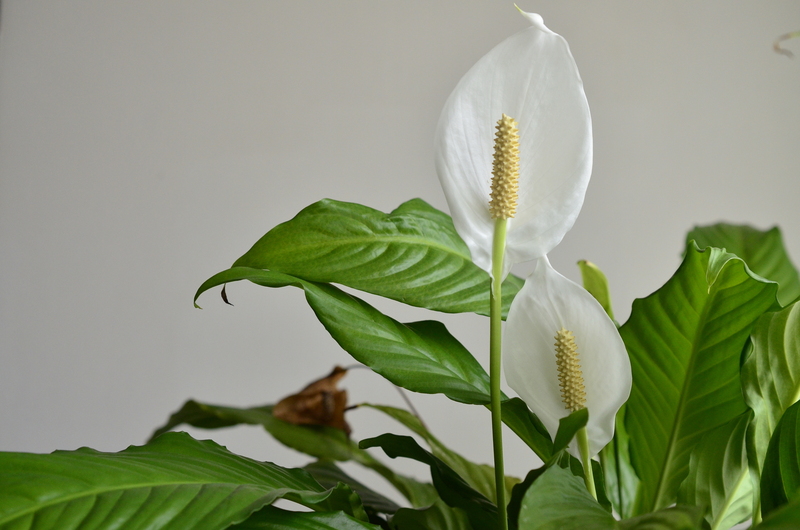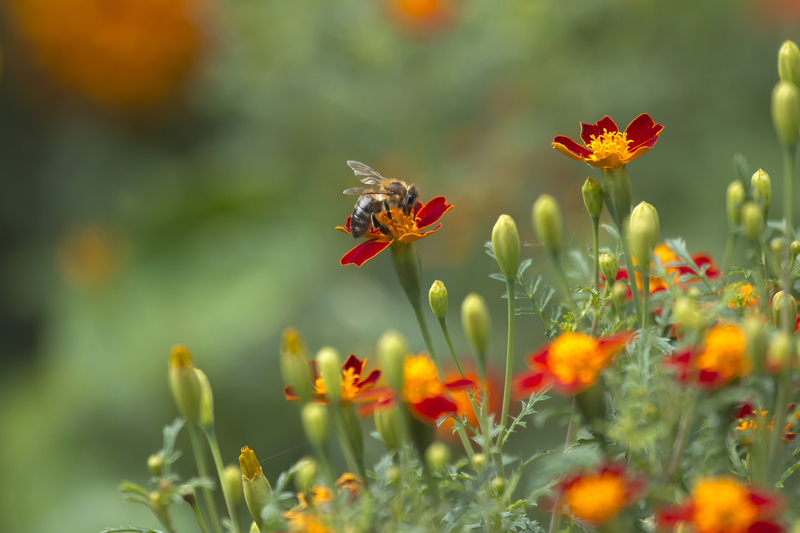Crafting the Perfect Environment for Orchids
Posted on 07/06/2025
Crafting the Perfect Environment for Orchids: An Expert Guide
Orchids are among the most stunning and fascinating plants to grace our homes and greenhouses. Their exotic flowers, diversity in species, and captivating fragrances have charmed plant enthusiasts for centuries. However, growing orchids successfully requires a thoughtful approach to their environment. In this comprehensive guide, we will delve into the secrets of crafting the ideal orchid environment to help your prized flowers thrive.

Understanding the Needs of Orchids
One of the keys to successful orchid cultivation is recognizing their unique requirements. Orchids are famed for their diversity, with over 28,000 species and countless hybrids. In their natural habitats, orchids are found on every continent except Antarctica - from lowland tropics to temperate forests, and even mountainous regions. Despite this variety, most of the popular orchids for home growing share similar environmental needs.
- Light: Indirect but bright sunlight is crucial.
- Humidity: Moderate to high humidity keeps orchids healthy.
- Air circulation: Fresh air is essential to prevent disease.
- Water: Careful watering is needed - not too much or too little.
- Temperature: Most orchids enjoy warm days and cooler nights.
- Soil/Substrate: Special orchid media instead of traditional soil.
Let's explore each aspect in depth to learn how to craft the perfect environment for your orchids.
Optimal Orchid Lighting
Understanding Orchid Light Requirements
Lighting tops the list of essential components for creating the best environment for orchids. Most types, including the popular Phalaenopsis, Cattleya, and Dendrobium, prefer diffuse, filtered light. Too much direct sun can scorch the leaves, while too little makes blooms scarce.
How to Provide Ideal Lighting
- Windowsills: East or west-facing windows offer gentle morning or afternoon sun.
- Sheer Curtains: Diffuse harsh rays with curtains or blinds.
- Artificial Lighting: Use LED or fluorescent grow lights during darker months or in low-light homes.
- Rotate Plants: This ensures even light exposure and prevents leaning.
Tip: Orchid leaves should be a light, vibrant green. Dark green leaves suggest too little light, while reddish or yellowish tones may mean too much.
Mastering Orchid Humidity
The Role of Humidity in Orchid Health
Orchids thrive in environments where the air contains 50-80% humidity. Dry indoor air, especially during winter, can lead to shriveled pseudobulbs or limp leaves.
Maintaining Humidity Levels
- Humidity Trays: Place pebbles and water below pots to lift ambient humidity.
- Grouping Plants Together: Creates a microclimate and elevates moisture in the air.
- Misting: Lightly mist leaves with water, but avoid excessive wetness.
- Humidifiers: Invest in a room humidifier for precise control, especially in winter.
- Avoid Stagnant Air: Good air flow is essential to stave off fungal problems from high humidity.
Insight: Add a hygrometer near your orchids to monitor humidity for the perfect orchid environment at home.
Encouraging Healthy Air Circulation
Proper air movement is vital in the ideal environment for orchids. In the wild, gentle breezes help keep leaves dry and inhibit pests or diseases. Indoors, stagnant air can contribute to rot, mildew, and unhappy plants.
Strategies for Better Airflow
- Fans: Small oscillating fans in the growing area replicate natural breezes.
- Spacious Placement: Don't crowd your orchids, allow air to flow freely.
- Open Windows: Seasonally, open a window for a fresh air exchange (but avoid cold drafts).
Reminder: Good air movement is essential, but do not direct strong drafts at the plants.
Smart Watering for Orchids
The Art of Watering in the Ideal Orchid Habitat
Watering is a balancing act for every orchid grower. Overwatering is one of the most common causes of failure, while underwatering leads to shriveling and poor flowering. The perfect orchid environment takes rainfall patterns into account, mimicking wet and dry cycles.
- Water When the Potting Medium is Nearly Dry: Use your finger or a wooden skewer to check moisture.
- Use Room-Temperature, Non-Softened Water: Rain or filtered water is best.
- Water the Roots, Not the Leaves: Avoid standing water in the crown (where leaves join) to prevent rot.
- Drain Well: Ensure excess water can escape via drainage holes and never let the pot sit in water.
Weekly Tip: For most indoor orchids, water every 5-7 days in summer and every 10-14 days in winter.
Choosing the Right Potting Medium and Container
Potting Substrate for Orchids
Traditional garden soil suffocates orchid roots. Instead, use a mix that mimics tree bark, moss, or other natural perches found in their native habitats.
- Bark Chips: Excellent drainage and air space, ideal for most epiphytic orchids.
- Sphagnum Moss: Retains more moisture, useful in dry conditions or for smaller plants.
- Charcoal, Perlite, Coconut Husk: Enhances structure and drainage in custom mixes.
Selecting the Best Orchid Pot
- Drainage: Orchid pots must have several holes at the base and sometimes the sides.
- Material: Clear plastic pots allow root observation, while terracotta 'breathes' for healthier roots.
- Size: Choose pots just big enough for the root system and repot every 1-2 years.
Note: Repot after flowering or when the mix breaks down, not during active blooming.
Temperature Preferences for Orchids
The optimal temperature environment for orchids varies by species, but most houseplants enjoy:
- Daytime: 65?F-80?F (18?C-26?C)
- Nighttime: 55?F-65?F (13?C-18?C)
A slight temperature drop at night encourages better blooming. Avoid extremes, as orchids are sensitive to harsh conditions. If you are growing especially rare or tropical species, research their unique temperature needs for the best orchid growing environment.
Troubleshooting: Orchid Environment Problems
- Wrinkled or limp leaves: Usually a sign of under or overwatering
- Blackened leaf tips: Possible over-fertilization or salt buildup; flush the pot thoroughly
- No flowers: Increase light, check temperature drops at night
- Mold or rot: Improve ventilation and reduce watering
- Yellow leaves: Too much sun or natural leaf cycling
Fertilizing for Lush Growth and Blooms
Orchids need nutrients to bloom beautifully. However, they are susceptible to overfertilization. Use a balanced, water-soluble orchid fertilizer, generally at half the recommended strength. Fertilize every 2 to 4 weeks in the growing season (spring and summer), and reduce to monthly or less in the dormant season (autumn and winter). Seek out products specifically designed for orchids for best results in your orchid habitat.
Creating a Miniature Orchid Greenhouse
If you're passionate about orchids or want to create the ultimate environment for sensitive or rare species, consider building a small indoor greenhouse or terrarium:
- Enclosed structures: Retain warmth and humidity, perfect for miniatures and humidity-loving orchids.
- Automated misters and fans: Help regulate moisture and airflow.
- Grow lights on timers: Provide consistent lighting, especially in winter.
- Thermostats and hygrometers: Keep critical environmental factors in check.
Greenhouses provide year-round control over every aspect of the orchid environment, enabling remarkable displays and healthier plants.
Orchid Species Spotlight: Environmental Requirements
Phalaenopsis (Moth Orchids)
- Most popular for beginners
- Require moderate, indirect light
- Do best in 60-80% humidity
- Water once roots are nearly dry
Cattleya Orchids
- Prefer bright but filtered light
- Like 50-70% humidity
- Enjoy a day/night temperature difference
Dendrobium Orchids
- Adaptable but need good air movement
- Like to dry out slightly between watering
- Enjoy cooler winter rest for flower initiation
Common Mistakes in Orchid Care and How to Avoid Them
- Ignoring humidity levels: Use a tray or humidifier to prevent dehydration.
- Incorrect potting medium: Never use standard soil for orchids.
- Leaving water in crowns or trays: Always empty standing water to avoid rot.
- Blocking air flow: Avoid stuffing orchids in crowded or sealed spaces.
- Fertilizing too often or strongly: Less is more; follow "weakly, weekly."

FAQs: Creating the Best Orchid Environment
How do you know if your orchid is happy?
Healthy green leaves, firm roots, new leaf or spike growth, and eventual flowering all indicate that the orchid environment is perfect.
Can orchids grow outdoors?
Yes, in mild, frost-free climates, many species can be grown outdoors year-round, but pay close attention to rain, light, and pests.
How often do orchids bloom?
Given the right conditions, many indoor orchids bloom once or even twice per year. Some, like Phalaenopsis, may hold blooms for several months.
Conclusion: Your Path to Orchid Perfection
Crafting the perfect environment for orchids is both an art and a science. It starts with understanding your orchid species and mimicking their natural habitats as closely as possible. Provide the right light, humidity, air flow, and temperature, combine this with proper watering and feeding, and your collection will reward you with lush, lasting blooms and healthy, resilient plants.
With patience and attention to detail, anyone can create a thriving orchid habitat at home. Use this guide as your foundation and enjoy the fulfillment of nurturing some of nature's most exquisite living jewels!
Experience the joy and wonder of orchid growing by crafting your own perfect environment for orchids today!

